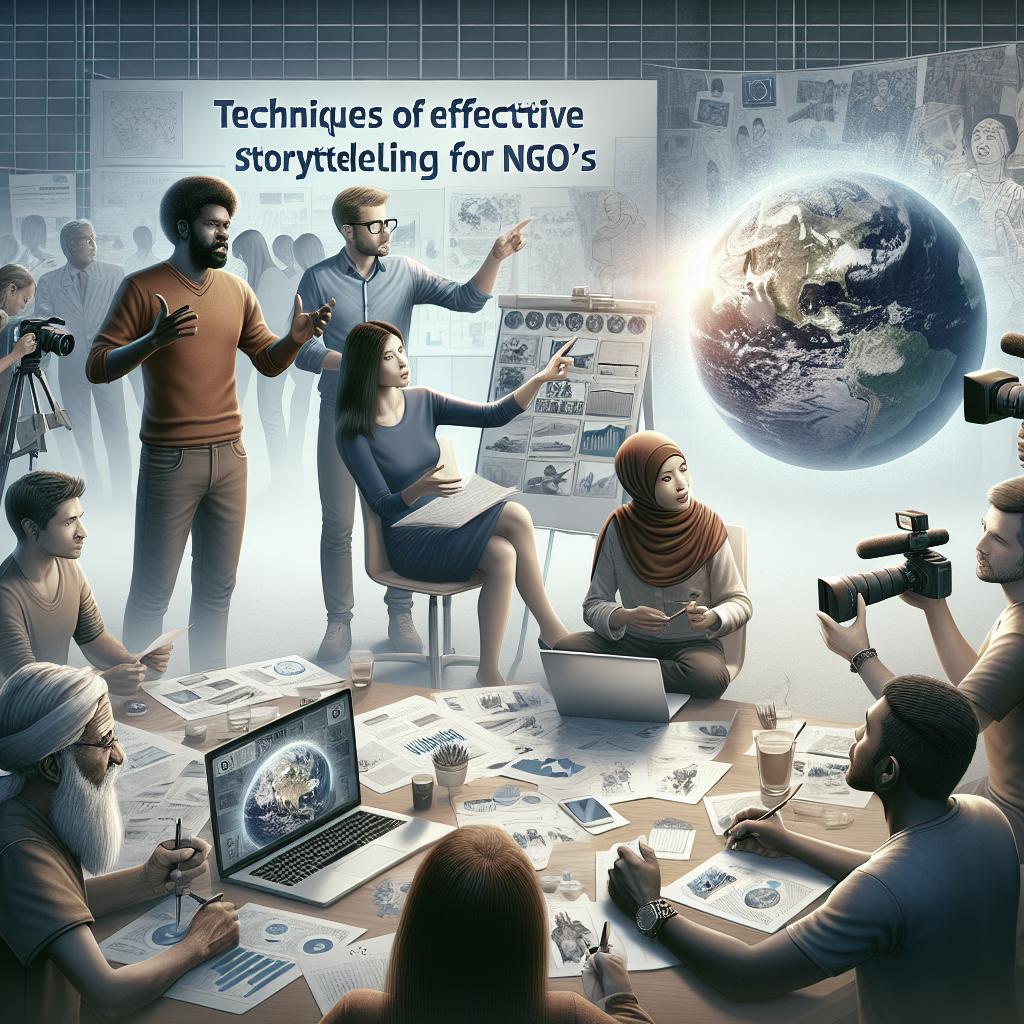“`html
Techniques for Effective NGO Storytelling
In today’s digital age, nonprofits face the challenge of conveying their mission in ways that resonate, inspire, and engage their audiences. Effective NGO storytelling is crucial to influence donors and attract support. By using real-world examples from the Malala Fund, Charity: water, Battersea Animal Shelter, and High Jump, this article explores four key techniques: placing the donor as the hero, leveraging statistics to highlight impact, appealing to emotions, and utilizing video storytelling. Each technique illustrates how organizations can make their narratives compelling and ensure they communicate their message powerfully. Through these strategies, NGOs can foster a deeper connection with their supporters, increasing engagement and driving action towards their cause.
Place the donor as the hero: Malala Fund
The concept of making the donor the hero revolves around positioning supporters as pivotal to the success of a nonprofit’s mission. The Malala Fund exemplifies this by crafting narratives where donors are portrayed not merely as benefactors, but as champions of the cause. For instance, the organization often showcases stories where donors’ contributions have directly impacted girls’ education. Celebrating donor involvement in tangible outcomes evokes a sense of shared triumph between the organization and its supporters.
By giving their stakeholders an active role in the story, the Malala Fund is able to cultivate a deeper emotional investment from their audience. They effectively utilize personal success stories, complemented by photographs and testimonials, to convey that each donor has become a critical player in advancing education and empowering girls worldwide. This approach not only helps in sustaining existing donor relationships but also attracts new supporters who want to see themselves as part of an impactful narrative.
Use statistics to communicate impact: Charity: water
Charity: water is a prime example of how incorporating statistics can enhance the storytelling experience by highlighting the tangible impact of donations. They expertly balance emotive stories of individuals and communities with hard data that showcases the broader significance of their work. For example, sharing how many wells they have built or the number of people now with access to clean water combines factual data with human interest to create a powerful message.
This technique reassures potential donors of the NGO’s transparency and effectiveness, strengthening trust. Charity: water’s transparency model often includes real-time project updates and even GPS coordinates, allowing donors to track the progress of their contributions. By demonstrating clear, measurable outcomes alongside heartfelt stories, they effectively paint a comprehensive picture of change that resonates with a more analytics-driven audience.
Use an emotional appeal: Battersea Animal Shelter
Emotional appeal plays an integral role in nonprofit storytelling, helping to create a profound connection with the audience. Battersea Animal Shelter, for example, shares emotive stories of rescued animals to connect with animal lovers on a deeper level. Through heartwarming narratives and compelling images or videos of transformation—from abandonment to rescue—they draw the audience into the emotional journey of each animal.
These stories are crafted to tug at the heartstrings, encouraging empathy and an emotional response that spurs action. By focusing on an animal’s journey and the transformative power of compassionate care, Battersea is able to inspire donations and adoption. Their ability to blend personal stories of hope with a call to action ensures that donors feel an immediate connection and recognize their vital role in making happy endings possible.
Use video: High Jump
Incorporating video into storytelling enables NGOs to bring their missions to life in a dynamic and engaging way. High Jump, a nonprofit focused on educational equality, uses video to showcase the real-life experiences and successes of its scholars. Through impactful visuals and compelling narratives, they can convey the essence of their work in a way that static images or text alone cannot.
Video storytelling allows High Jump to engage viewers by providing immersive experiences that illustrate the benefits of their programs. These visual stories highlight the changes in the lives of the students they support, emphasizing the significance of educational access. Videos distributed through social media and digital campaigns attract a wider audience and are easily shareable, amplifying their reach and impact.
Next Steps: Enhancing Storytelling in Your NGO
| Technique | Example Organization | Key Takeaway |
|---|---|---|
| Place the donor as the hero | Malala Fund | Involve donors actively in the narrative, highlighting their impact. |
| Use statistics to communicate impact | Charity: water | Combine storytelling with data to showcase measurable outcomes. |
| Use an emotional appeal | Battersea Animal Shelter | Craft emotive narratives to spark empathy and action. |
| Use video | High Jump | Leverage video for immersive and compelling storytelling. |
“`


